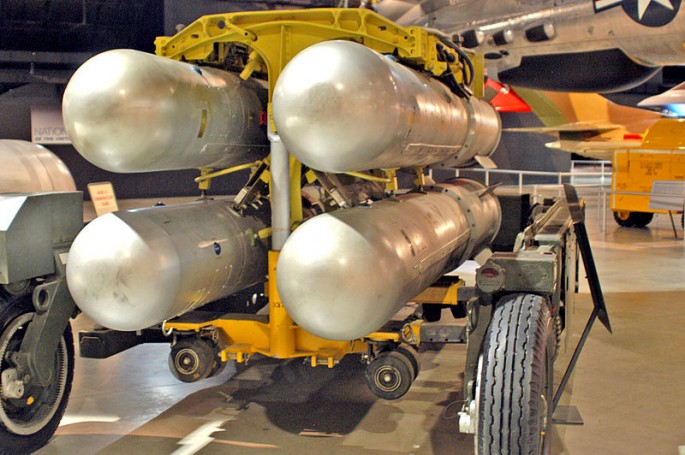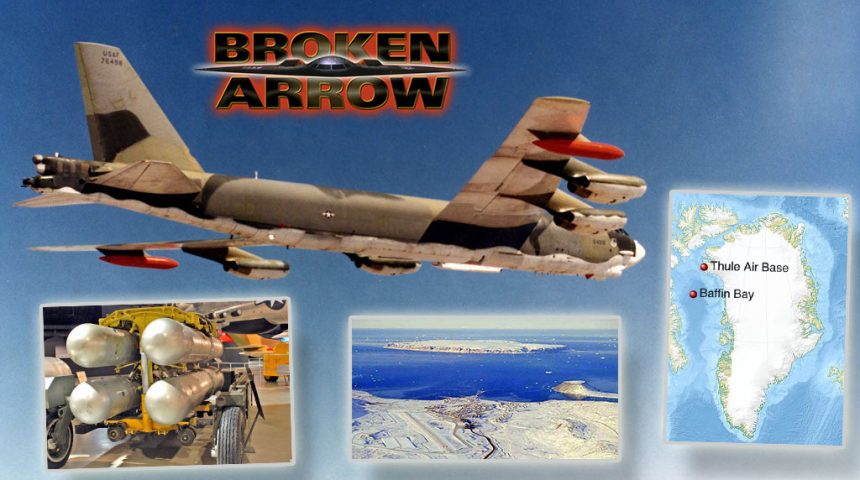The Thule Air Base Broken Arrow incident.
On Jan. 21, 1968, a B-52G Stratofortress belonging to the 380th Strategic Bomb Wing from Plattsburgh Air Force Base, New York, crashed in in Greenland in what is remembered as the second “Broken Arrow” incident (yes, that codeword is not only used in movies).
The bomber, using radio callsign “Hobo 28” was flying an armed peacetime airborne alert mission known under the codename of “Hard Head”: its purpose was to maintain a visual surveillance of the Ballistic Missile Early Warning System (BMEWS), which provided early warning of Soviet missile launches, at Thule Air Base.
The bomber crew consisted of five regular crew members, including Captain John Haug, the aircraft commander, a substitute navigator (Captain Curtis R. Criss) and a mandatory third/spare pilot (Major Alfred D’Mario).
Before take-off, D’Mario placed three cloth-covered foam cushions on top of a heating vent under the instructor navigator’s seat in the aft section of the lower deck. Shortly after take-off, another cushion was placed under the seat. About one hour after conducting air-to-air refueling with a KC-135, as the bomber was flying on its assigned orbit, D’Mario opened an engine bleed valve to draw additional hot air into the heater from the engine manifold, as the crew was uncomfortable because of the cold. However, because of a heater malfunction, the air barely cooled as it traveled from the engine manifold to the cabin’s heating ducts. During the next half-hour, the cabin’s temperature became uncomfortably hot, and the stowed cushions ignited.
At 15:22 EST, about six hours into the flight and 90 miles (140 km) south of Thule Air Base, Haug declared an emergency because of fire on board. About five minutes later, the aircraft’s fire extinguishers were depleted, electrical power was lost and smoke filled the cockpit to the point that the pilots could not read their instruments: the commander ordered the crew to prepare to abandon the aircraft. As the aircraft was flying directly over Thule Air Base, the crew ejected. All but co-pilot, Leonard Svitenko, who had given up his ejection seat when the spare pilot D’Mario took over from him, survived. Svitenko sustained fatal head injuries when he attempted to bail out through one of the lower hatches.
The B-52G eventually crashed on sea ice in North Star Bay. The four hydrogen bombs carried by the B-52 (that did not detonate because of “Weak Links” safety mechanisms) released radioactive material. In spite of an attempt to restrict the leaks, the high winds, the cold temperatures and the fire of the burning Stratofortress caused the dispersion of some other radioactive material into the sea.
Btw, one of the four B28 Thermonuclear bombs remains unaccounted for.

The crash, which followed the other Broken Arrow incident occurred in Spain two years earlier, highlighted the safety (and diplomatic) risks those kind of airborne alert missions, which were immediately ended.









